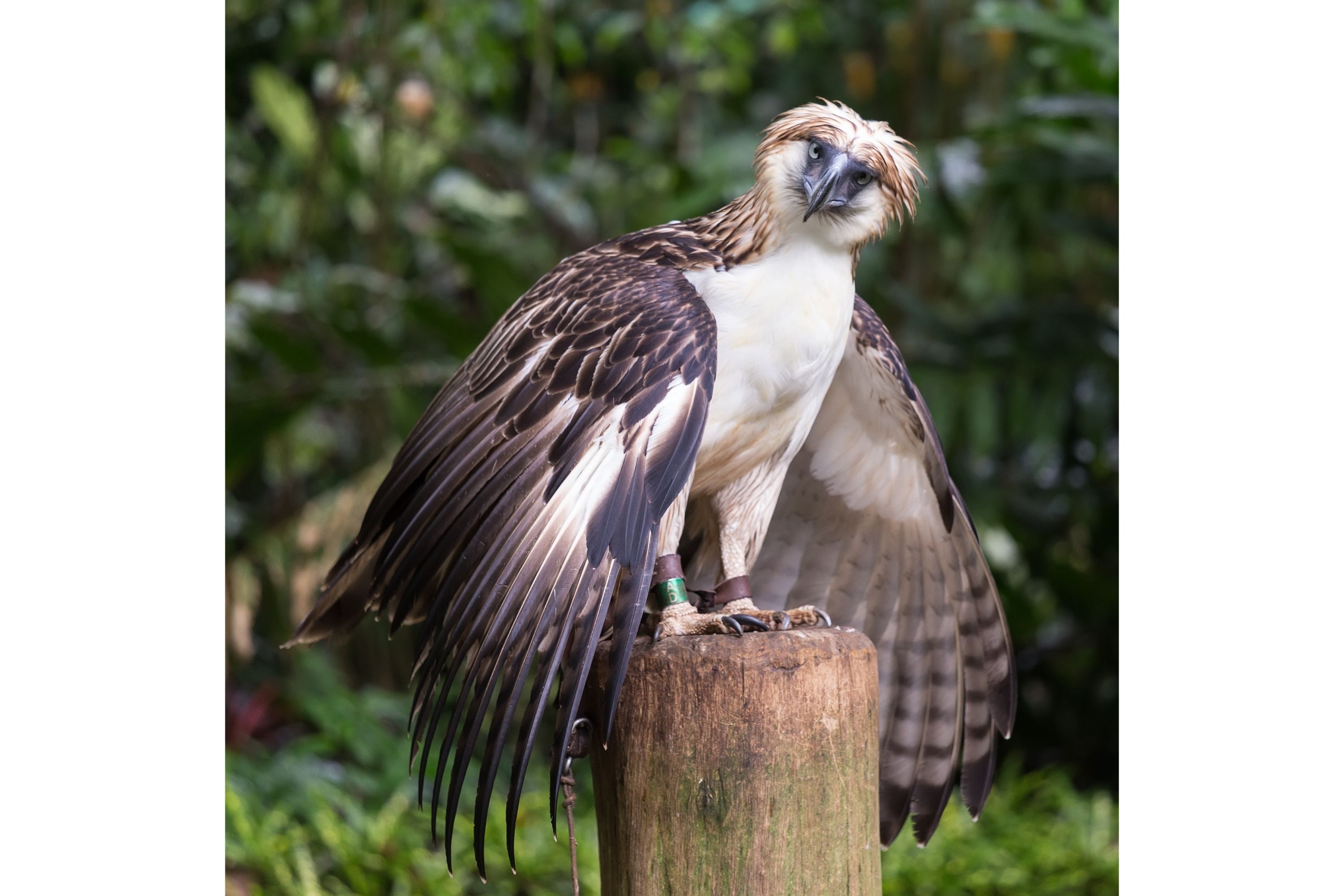Philippine eagle
(Pithecophaga jefferyi)

Description
The Philippine eagle (Pithecophaga jefferyi), also known as the monkey-eating eagle or great Philippine eagle, is a critically endangered species of eagle of the family Accipitridae which is endemic to forests in the Philippines. It has brown and white-colored plumage, a shaggy crest, and generally measures 86 to 102 cm (2.82 to 3.35 ft) in length and weighs 4.04 to 8.0 kg (8.9 to 17.6 lb). The Philippine eagle is considered the largest of the extant eagles in the world in terms of length and wing surface, with only Steller's sea eagle and the harpy eagle being larger in terms of weight and bulk. It has been declared the national bird of the Philippines. The most significant threat to the species is loss of habitat, a result of high levels of deforestation throughout most of its range. Killing a Philippine eagle is punishable under Philippine law by up to 12 years in prison and heavy fines. The Philippine eagle's nape is adorned with long, brown feathers that form a shaggy, manelike crest. The eagle has a dark face and a creamy-brown nape and crown. The back of the Philippine eagle is dark brown, while the underside and underwings are white. The heavy legs are yellow, with large, powerful, dark claws, and the prominent, large, high-arched, deep beak is a bluish-gray. The eagle's eyes are blue-gray. Juveniles are similar to adults except their upperpart feathers have pale fringes. The Philippine eagle is typically reported as measuring 86–102 cm (2 ft 10 in 3 ft 4 in) in total length, but a survey of several specimens from some of the largest natural history collections in the world found the average was 95 cm (3 ft 1 in) for males and 105 cm (3 ft 5 in) for females. Based on the latter measurements, this makes it the longest extant species of eagle, as the average for the female equals the maximum reported for the harpy eagle and Steller's sea eagle. The longest Philippine eagle reported anywhere and the longest eagle outside of the extinct Haast's eagle is a specimen from Field Museum of Natural History with a length of 112 cm (3 ft 8 in), but it had been kept in captivity so may not represent the wild individuals due to differences in the food availability. The level of sexual dimorphism in size is not certain, but the male is believed to be typically about 10% smaller than the female, and this is supported by the average length provided for males and females in one source.
Taxonomic tree:







